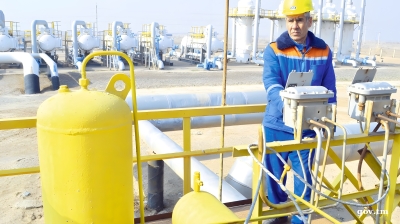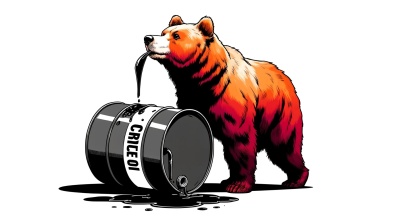Over 1,000 ships reported their GPS satellite navigation systems were jammed in the Strait of Hormuz in the last few days, as the Iranian parliament decided to close the passage in retaliation to the US bombing of three nuclear sites at the weekend.
Over the past week, between 970 and 1,100 ships a day have been experiencing GPS jamming in the Straits of Hormuz, in the vicinity of Iran’s coast. The jamming has significantly complicated navigation in one of the world’s busiest maritime corridors and there has already been a report of a collision between vessels. The collision of the Front Eagle and Adalynn at the end of last week may have been caused by the navigational interference.
Some 20% of the world’s oil tanker traffic pass through the Straits. The jamming incidents started being reported after Israel’s attack on Iran on June 12, but appear to have got worse after the US bombed three of Iran’s nuclear facilities on June 21.
The UK Maritime Trade Operations (UKMTO) office announced on June 23 that it has received reports from several vessels that have encountered GPS interference in the Strait, which lasted several hours.
"Masters who experience disruption to electronic navigation systems (GPS / AIS / other PNT) anywhere within the UKMTO Voluntary Reporting Area (VRA) are requested to contact UKMTO watchkeepers," the office said in a statement.
Although not as frequent as reports of GPS disruptions in the Baltics, connected to Russia’s war in Ukraine, disruptions have occurred in the Strait before, and have previously been linked to Iranian actors, the Maritime Executive reports.
The last major instance of jamming in 2019 was blamed on Iranian electronic warfare outposts on Abu Musa Island, located at the eastern entrance to the strait, a defence source told CNN.
As tensions in the Straits increase, there have been reports of individual tankers turning around before entering the straits, although at the time of writing the traffic through the straights does not appear to have been unduly reduced. However, daily transits through the Strait have dropped 20%, from about 147 to 114 ships in just one week.
Shipping through the Strait is already associated with high-risk premiums. With the introduction of GPS jamming, insurers are likely to increase war-risk surcharges and premiums on freight moving through or near the region.
As bne IntelliNews reported, Iran could easily chut down the straits to traffic using maritime mines. Iran is well equipped with a stock of mines and has three Russian-made Kilo class stealth submarines that can carry 40 mines each to seed the narrow transit channels in the straits that are only a few kilometres wide. Insurers would immediately order ships to turn back or drop anchor if Tehran announced it had mined the straits.
VLCC (very large crude carrier) charter rates have already doubled from around US $20,000/day to over $47,000/day. Freight rates on the Middle East–China routes alone have spiked 40% since June 13. Hull & machinery (H&M) insurance premiums rose by over 60%, increasing from 0.125% to 0.20% of a vessel’s value—equating to an additional $75,000 on a $100mn ship, reports Fair Point Global. War-risk surcharges have jumped from $0.20 to $0.80 per barrel, adding nearly $1.2mn per VLCC voyage. Marine cargo insurance rates are also up 15–30%, with war-risk add-ons ranging from 0.10–0.15% of cargo value.
If the straits are closed or become too risky to traverse, the alternative route around the Cape of Good Hope would add 10-15 days to a journey between Asia and Europe, that industry professionals say would produce a “ripple effect” in container scheduling and port congestion, especially in Europe and the US East Coast.
Asian markets will also be affected as energy exports from the Persian Gulf, especially crude oil and liquefied natural gas (LNG), are crucial for Asian economies. China imports some 45% of its fuel needs from the Gulf countries. If Hormuz navigation is compromised, eastbound tankers may reduce speed or seek alternate schedules, increasing delivery time and cost for major buyers like China, Japan, and South Korea.
|
Oil and gas transiting the Straits of Hormuz |
||
|
Exporter |
Daily Oil Exports (via Hormuz) |
Key Recipients |
|
Saudi Arabia |
~6–7mn bpd |
China, India, Japan, Europe |
|
Iraq |
~3.3–3.5mn bpd |
China, India, Europe |
|
UAE |
~2.5mn bpd |
Asia, partly Europe |
|
Kuwait |
~2mn bpd |
Asia (especially Japan) |
|
Iran |
~1–1.5mn bpd (est.) |
China (mainly via sanctions workarounds) |
|
Oman |
Small but strategic volumes |
Asia |
|
Source: Kpler |
||
News

US push to pressure Iran providing fresh incentive for trans-Caspian pipeline
Turkmenistan showing interest in the idea.

US–China soybean sales restart
According to Scott Bessent, US Treasury Secretary, the agreement marks a significant step towards restoring normalcy for American farmers.

Russia faces $50bn annual losses from oil sanctions as Lukoil exits international assets
Russia is expected to lose at least $50bn annually due to oil-related sanctions, as Moscow’s largest private oil producer Lukoil agrees to sell its international assets and Germany considers nationalising operations owned by state-run Rosneft.

Chicken and chips in Seoul - for Nvidia, Samsung and Hyundai
In a low-key fried chicken shop in southern Seoul, the leaders of Nvidia, Samsung Electronics and Hyundai Motor held an informal meeting on the evening of October 30.

_Cropped.png)

